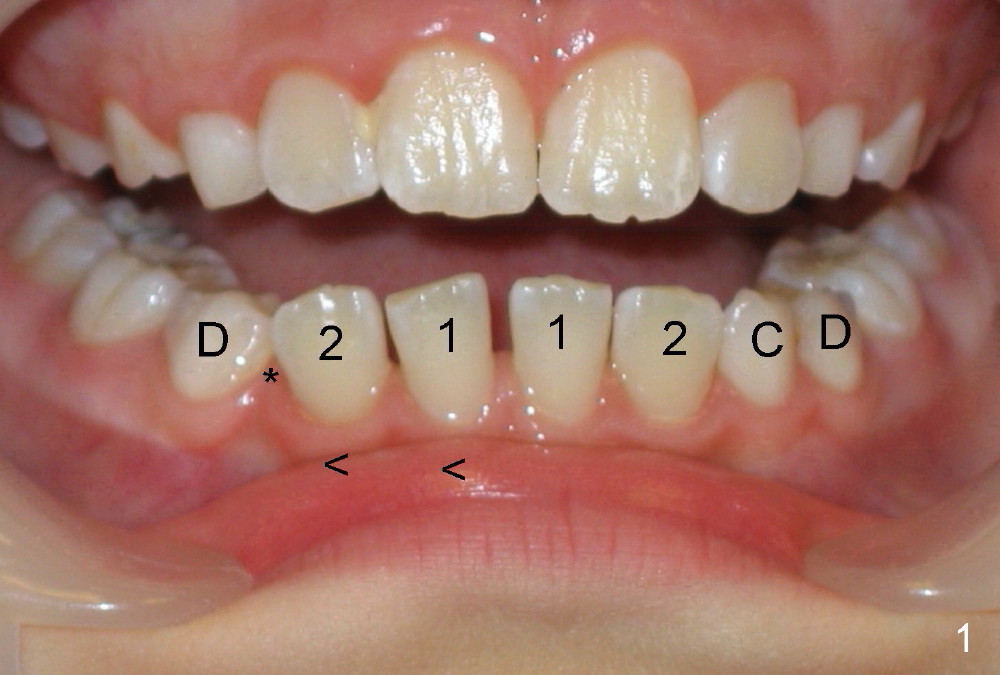
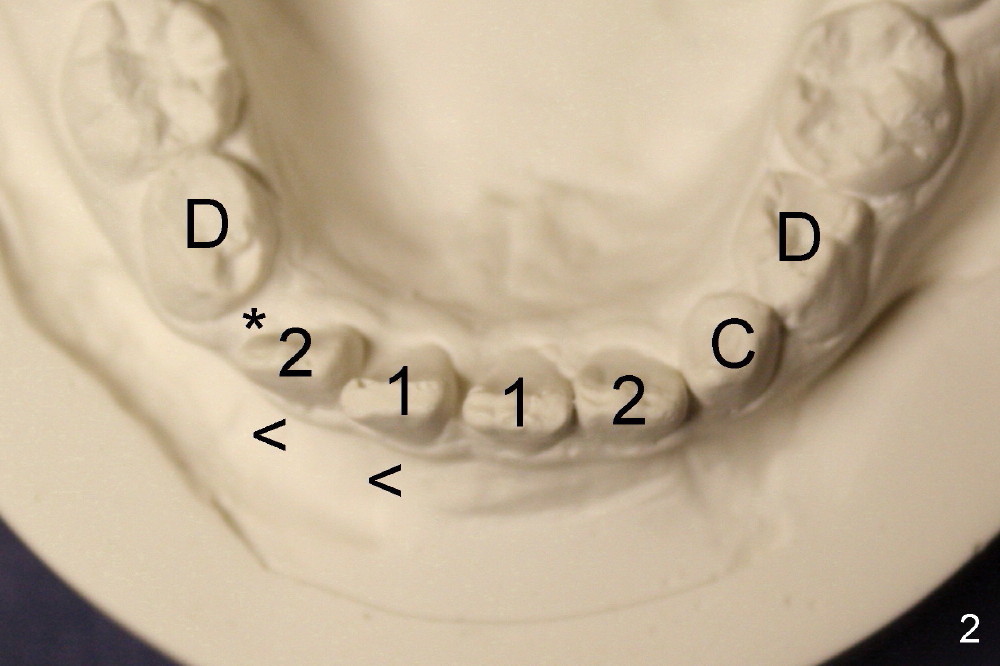
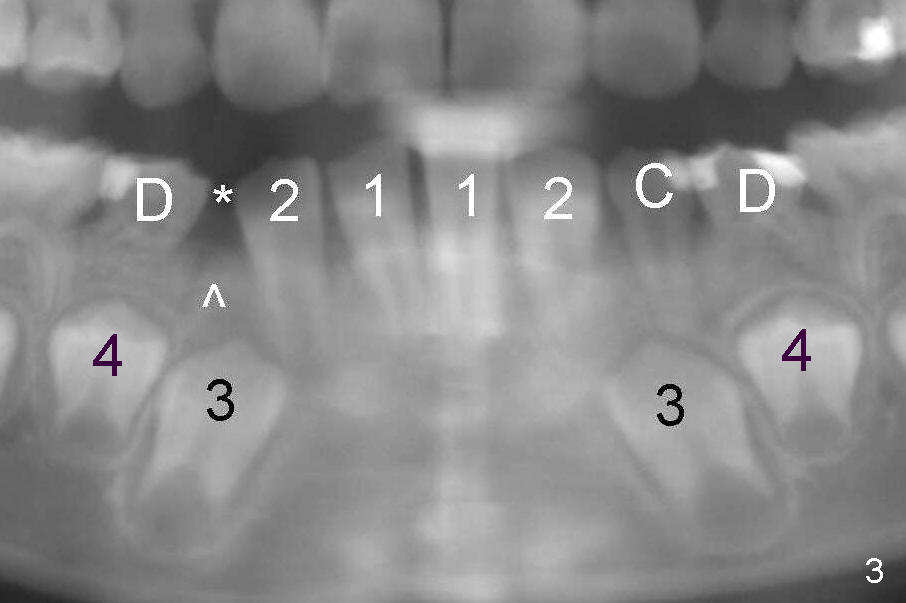
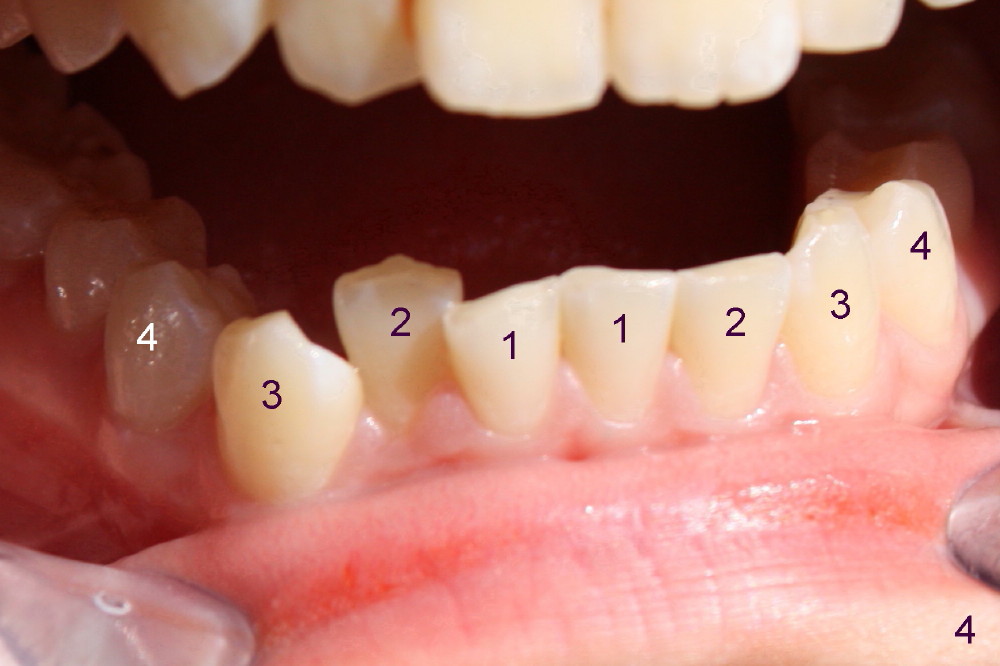
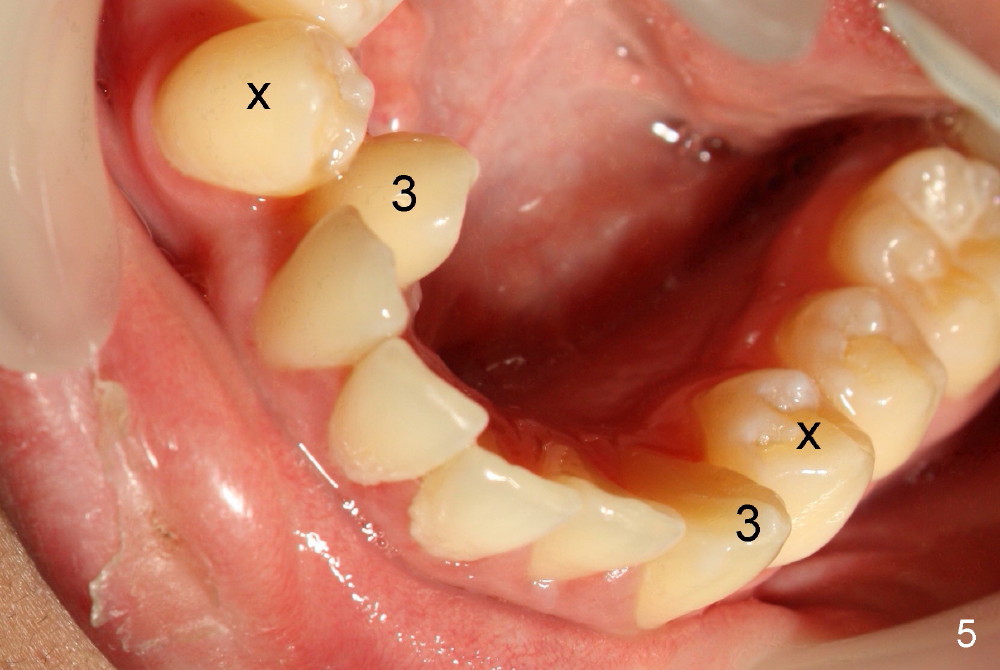
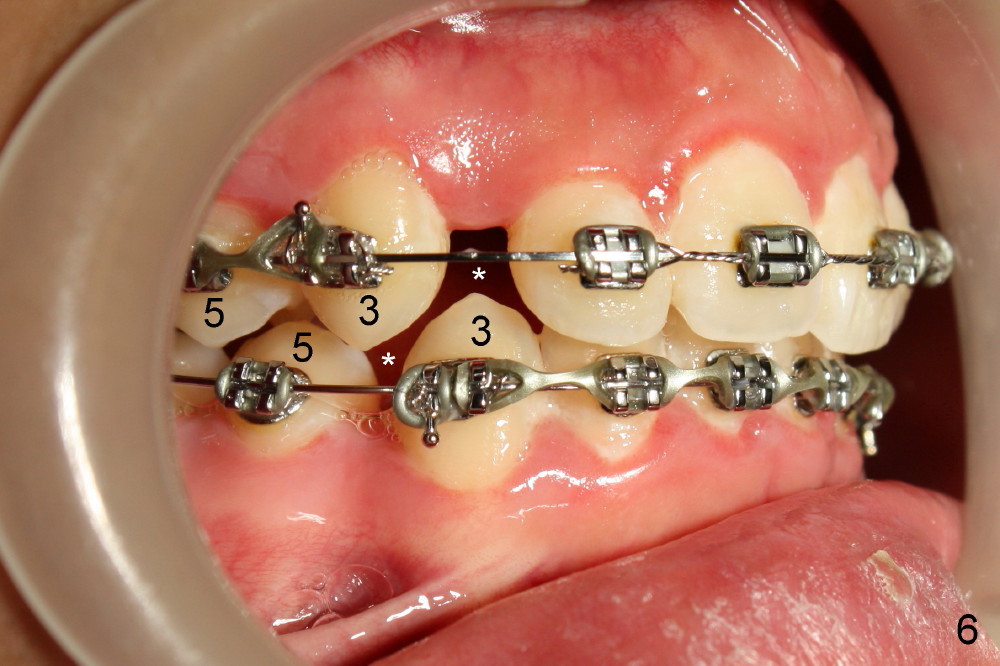
 |
 |
 |
 |
 |
 |
Early Loss of a Baby Canine Tooth
A 8-year-old girl loses a baby canine (Fig.1-3: *) for unknown reason too early. This tooth is supposed to fall out naturally at the age of 11. The permanent central (1) and lateral (2) incisors on the affected side have shifted to the missing tooth space (Fig.1,2 (biting surface view of a model) <). There is limited space (Fig.3 *) for the permanent canine (3) to grow into (^). Ideally early braces should be initiated to fix this minor issue. C in Fig.1-3 stands for the baby canine on the normal side, whereas D baby first molar.
Four years later without early braces, the permanent canine (Fig.4: 3 on the same abnormal side) is outside the lower dental arch, whereas the permanent lateral incisor (2) is inside the arch. The problem is magnified. In contrast, the permanent first premolars (4) on both sides are normal in position.
Fig.5 shows another case of abnormal canine eruption possibly because of early loss of the baby canine. This time, the permanent canine is inside the arch. To fix this problem (apparently single tooth issue), two lower first premolars are going to extracted (x) to make space for the canine. To match the bottom arch, the two first premolars on the top are also to be taken out. After about one year of braces, the lower canine (Fig.6: #3) is in the right position with loss of two 1st premolars on one side. Therefore without early braces, four of permanent teeth may be sacrificed for cases of early loss of a baby tooth (1 2 3).
Xin Wei, DDS, PhD, MS 1st edition 08/13/2012, last revision 09/11/2012